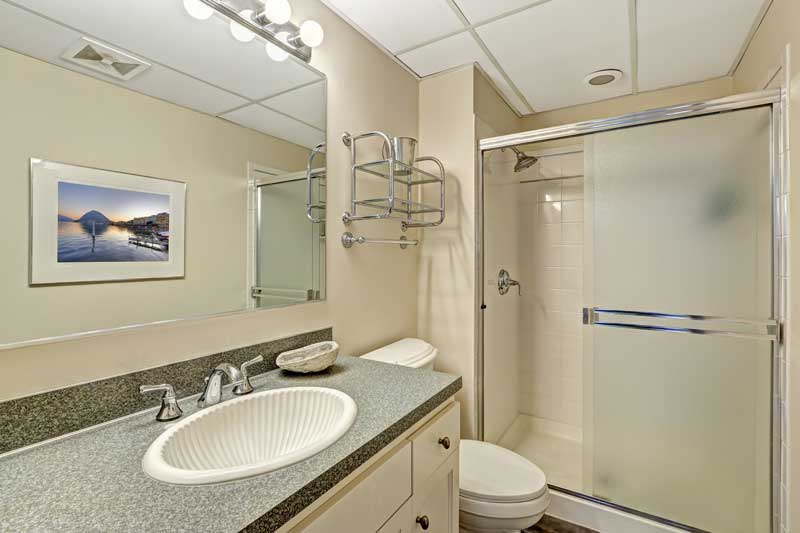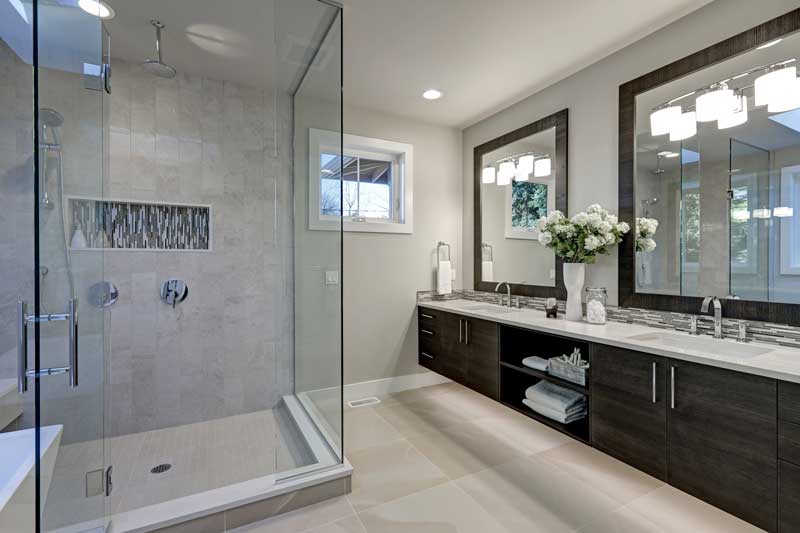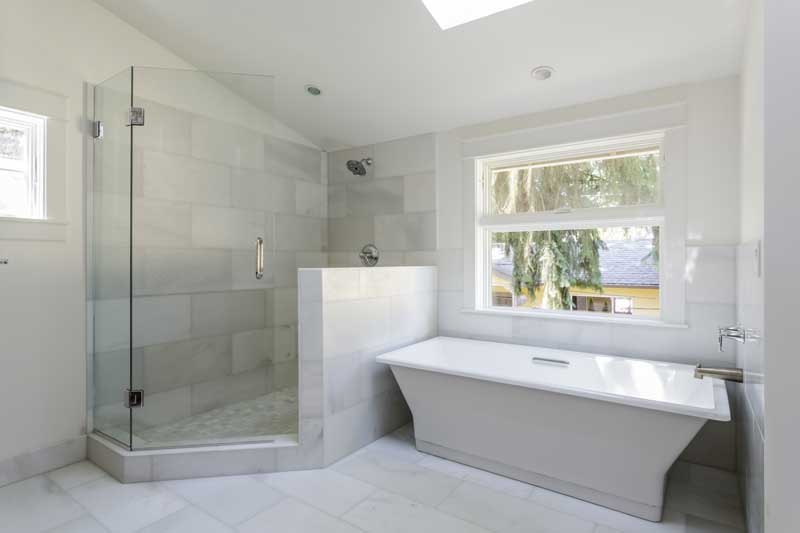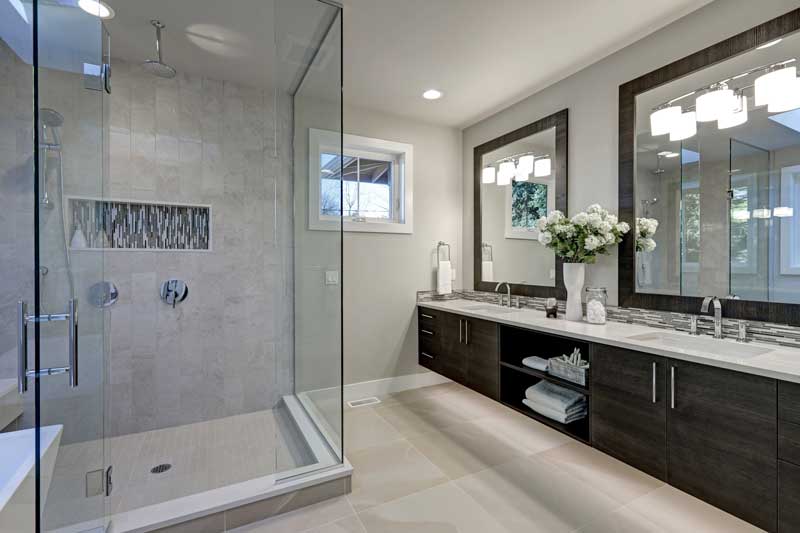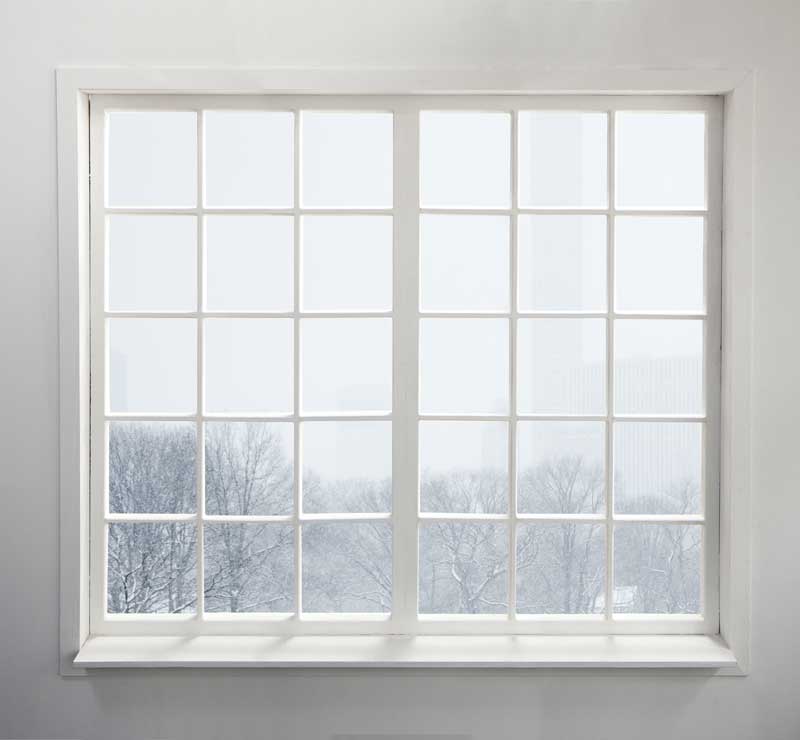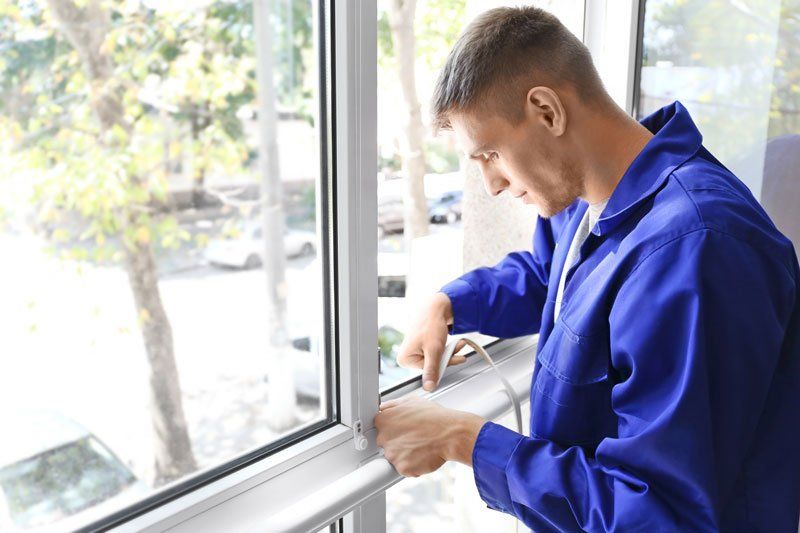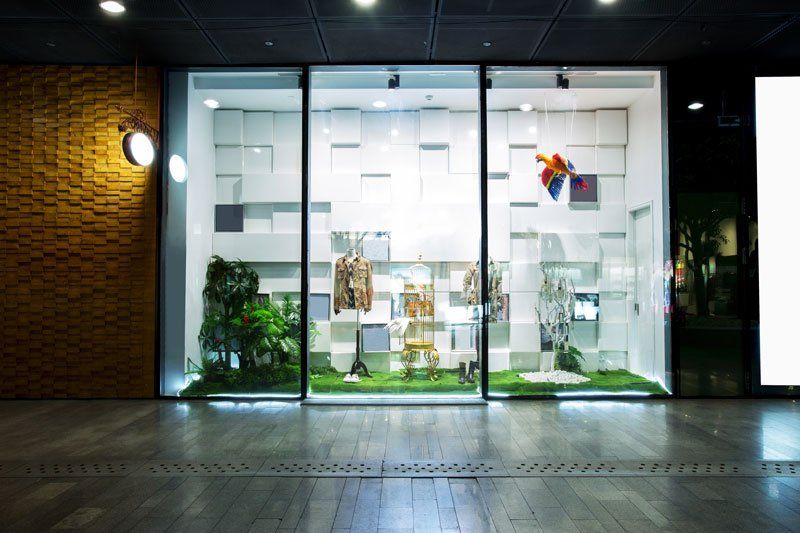Tempered Glass Knowledge from Your New Jersey Glass Installer
If you are interested in a ordering tempered glass, check out our Tabletop Gallery, Shower Doors, or Contact Us
to discuss your design.
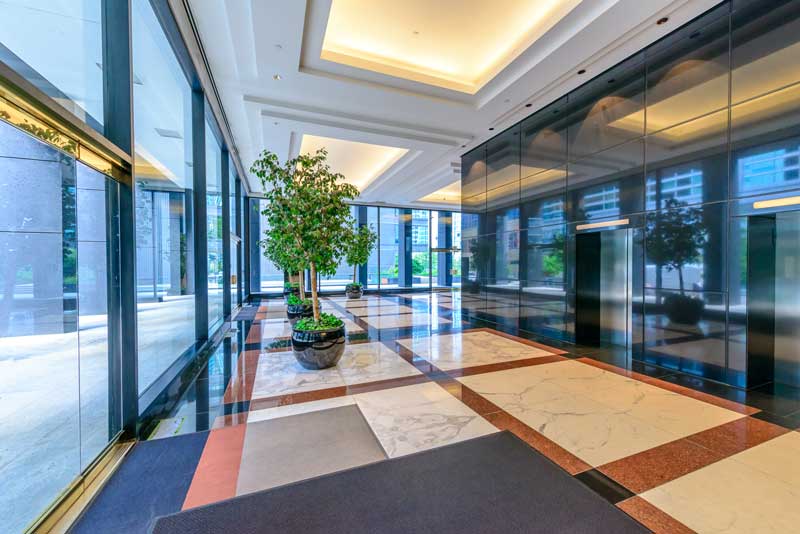
Tempered glass goes through a manufacturing procedure that ultimately makes it as much as five times as strong as other forms of glass. The procedure involves heating the glass up, and then cooling it down rapidly. This process makes the glass stronger, and also changes the way the glass breaks. The glass shatters into small blocks that are much less likely to cause injury. That is why Tempered glass is also called Safety glass.
The building codes that control where and how tempered glass are installed include:
1. Glass in any door.
2. Glass in any kind of shower, bathtub area, hot tub, steam room, sauna or whirlpool area where the bottom edge of the glass is less than 60 inches above a standing surface and drain outlet.
3. Glass in fixed or operable panels adjacent to a door where the nearest exposed edge of the glazing is within a 24” arc of either vertical edge of the door in a closed position and where the bottom edge of the glazing is less than 60” above a walking surface.
4. Glass in fixed or operable panels that meets all of the following conditions:
- Bottom edge is less than 18” above floor
- Top edge is greater than 36” above floor
- Total area of glass is greater than 9 sq. ft. (1296 sq.in.)
- One or more walking surfaces within 36” horizontally of the glazing
5. Glass in walls used as a barrier for indoor or outdoor swimming pools or spas when both of the following exist:
- The bottom edge of the glazing is less than 60” above a pool side of the glazing
- The glazing is within 5 feet of a swimming pool or spa deck area
6. Glass in walls enclosing stairway landings or within 5 feet of the bottom and top of stairways where the bottom edge of the glass is less than 60” above a walking surface.
Next time on the blog, we go into more detail about the process of creating tempered glass and its true durability based on testing. At Image Glass, every New Jersey glass installer is an expert that understands all aspects of different types of glass and where they are best utilized. The goal is to ensure your satisfaction and safety today and tomorrow.
To learn more about how Image Glass can help you to achieve beauty, efficiency, safety, and comfort with each installation, call us at (732) 438-8551
to speak to one of our glass specialists.
We are excited to announce Image Glass has grown & acquired Hillsborough Glass Company! Kurt is the new owner of Hillsborough Glass, which will now be known as Image Glass LLC with 2 locations- Monmouth Junction and Hillsborough. Hillsborough Glass began in 1976 with George “Chip” Christiansen. John Harenza began working for him in 1977. John took over Hillsborough Glass in 2002 and has been in the industry for 43 years. Kurt worked summers at Hillsborough Glass growing up, and started officially working at Hillsborough Glass in 2000 to learn the trade. In 2003 he went off on his own to create Image Glass LLC. in Monmouth Junction NJ. Hillsborough Glass and Image glass have always worked hand in hand over the last 20 years with Hillsborough Glass serving Somerset County and Image Glass serving Middlesex County. Even though our name is changing, you will still see the same friendly faces, as our friend John is staying on board as well as the rest of the team. We are so excited to now be servicing Somerset County with our new name Image Glass moving forward!

In past blog posts, we’ve talked about tempered glass commercial application usage as well as its use in glass shower doors. In the field, an image glass installer will get questions about different types of glass and its strength. Based on those questions, we decided to provide a primer on how tempered glass and heated glass are made and what properties they bring to safety.

